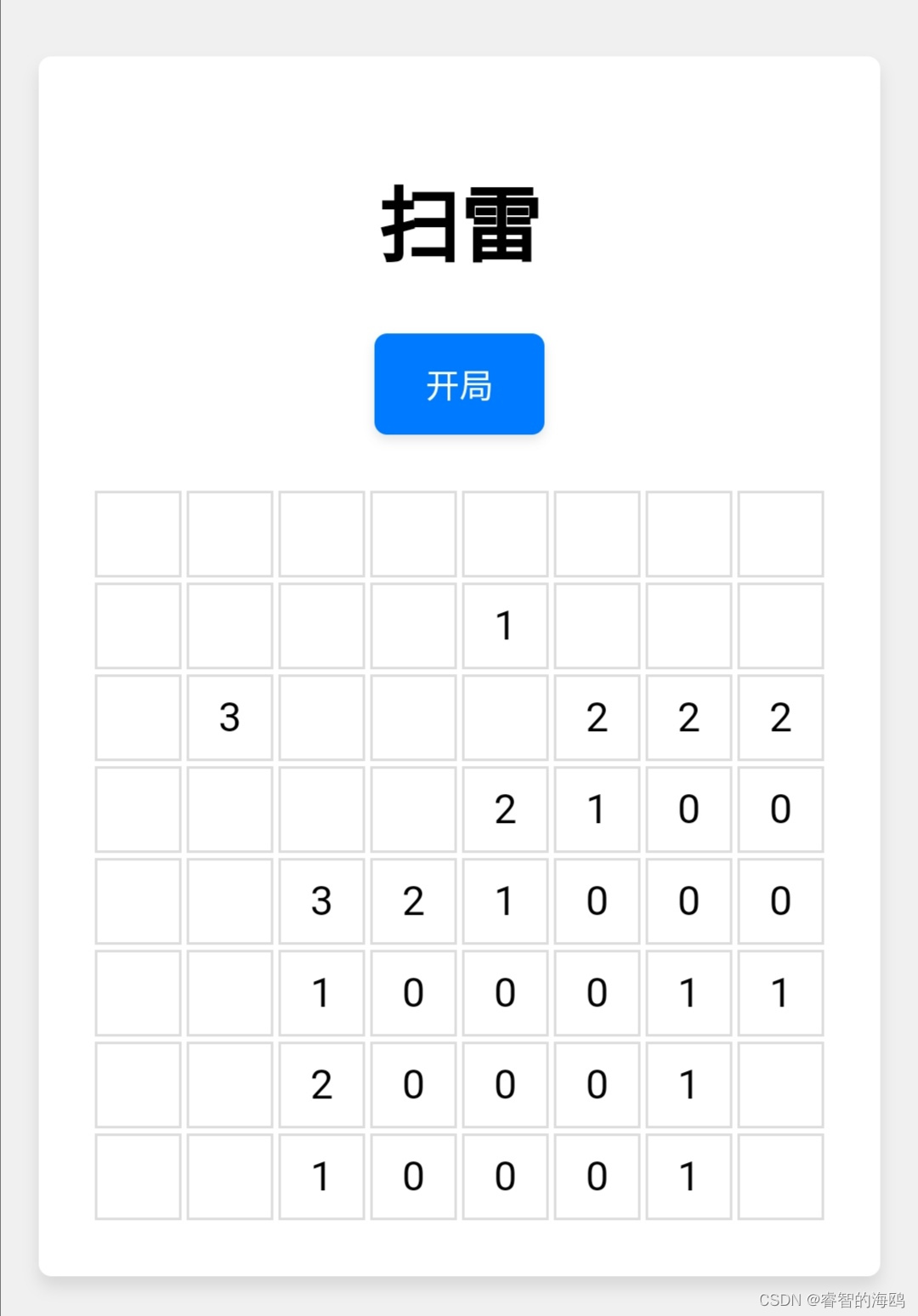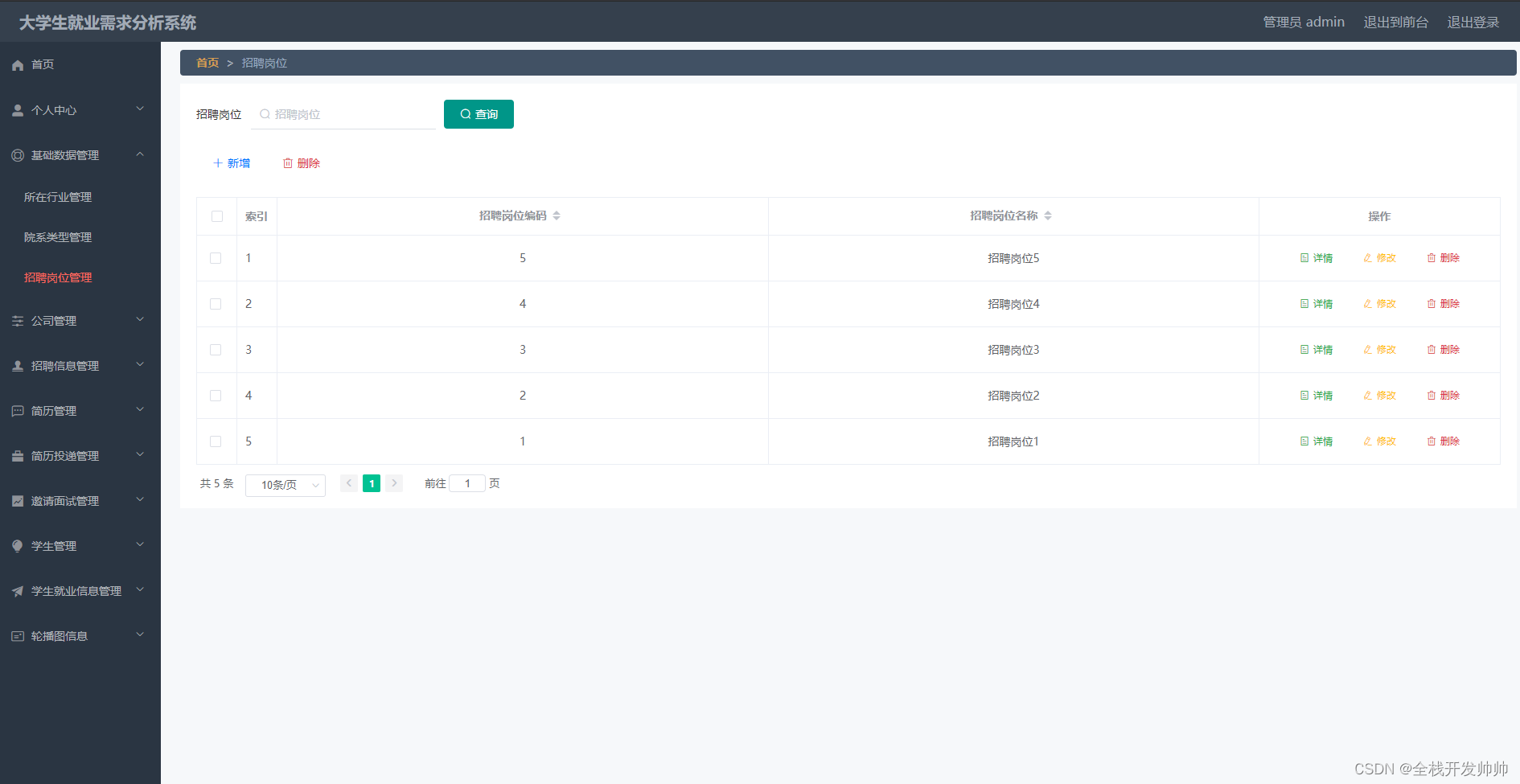代码里要求用pytorch1.0.0版本,其实不用也可以的。
【删掉run.py里的assert(torch.version == “1.0.0”)即可】
代码里面也有提示让你实现什么,弄懂代码什么意思基本就可以了,看多了感觉大框架都大差不差。多看多练慢慢来,加油!
参考文章:cs224n assignment3 2021
问题c,d:
找到parser.transition.py文件,打开,根据相应提示进行填充。(里面加了个import copy,因为跑run.py时报错说不认识copy)
#!/usr/bin/env python3
# -*- coding: utf-8 -*-
"""
CS224N 2018-19: Homework 3
parser_transitions.py: Algorithms for completing partial parsess.
Sahil Chopra <schopra8@stanford.edu>
"""
import sys
import copy
class PartialParse(object):
def __init__(self, sentence):
"""Initializes this partial parse.
@param sentence (list of str): The sentence to be parsed as a list of words.
Your code should not modify the sentence.
"""
# The sentence being parsed is kept for bookkeeping purposes. Do not alter it in your code.
self.sentence = sentence
### YOUR CODE HERE (3 Lines)
### Your code should initialize the following fields:
### self.stack: The current stack represented as a list with the top of the stack as the
### last element of the list.
### self.buffer: The current buffer represented as a list with the first item on the
### buffer as the first item of the list
### self.dependencies: The list of dependencies produced so far. Represented as a list of
### tuples where each tuple is of the form (head, dependent).
### Order for this list doesn't matter.
###
### Note: The root token should be represented with the string "ROOT"
###
self.stack = ['ROOT']
self.buffer = copy.deepcopy(sentence)
self.dependencies = []
### END YOUR CODE
def parse_step(self, transition):
"""Performs a single parse step by applying the given transition to this partial parse
@param transition (str): A string that equals "S", "LA", or "RA" representing the shift,
left-arc, and right-arc transitions. You can assume the provided
transition is a legal transition.
"""
### YOUR CODE HERE (~7-10 Lines)
### TODO:
### Implement a single parsing step, i.e. the logic for the following as
### described in the pdf handout:
### 1. Shift
### 2. Left Arc
### 3. Right Arc
if transition == 'S':
self.stack.append(self.buffer.pop(0))
elif transition == 'LA':
a = self.stack[-1]
b = self.stack.pop(-2)
self.dependencies.append((a,b))
elif transition == 'RA':
a = self.stack.pop()
b = self.stack[-1]
self.dependencies.append((b,a))
### END YOUR CODE
def parse(self, transitions):
"""Applies the provided transitions to this PartialParse
@param transitions (list of str): The list of transitions in the order they should be applied
@return dsependencies (list of string tuples): The list of dependencies produced when
parsing the sentence. Represented as a list of
tuples where each tuple is of the form (head, dependent).
"""
for transition in transitions:
self.parse_step(transition)
return self.dependencies
def minibatch_parse(sentences, model, batch_size):
"""Parses a list of sentences in minibatches using a model.
@param sentences (list of list of str): A list of sentences to be parsed
(each sentence is a list of words and each word is of type string)
@param model (ParserModel): The model that makes parsing decisions. It is assumed to have a function
model.predict(partial_parses) that takes in a list of PartialParses as input and
returns a list of transitions predicted for each parse. That is, after calling
transitions = model.predict(partial_parses)
transitions[i] will be the next transition to apply to partial_parses[i].
@param batch_size (int): The number of PartialParses to include in each minibatch
@return dependencies (list of dependency lists): A list where each element is the dependencies
list for a parsed sentence. Ordering should be the
same as in sentences (i.e., dependencies[i] should
contain the parse for sentences[i]).
"""
dependencies = []
### YOUR CODE HERE (~8-10 Lines)
### TODO:
### Implement the minibatch parse algorithm as described in the pdf handout
###
### Note: A shallow copy (as denoted in the PDF) can be made with the "=" sign in python, e.g.
### unfinished_parses = partial_parses[:].
### Here `unfinished_parses` is a shallow copy of `partial_parses`.
### In Python, a shallow copied list like `unfinished_parses` does not contain new instances
### of the object stored in `partial_parses`. Rather both lists refer to the same objects.
### In our case, `partial_parses` contains a list of partial parses. `unfinished_parses`
### contains references to the same objects. Thus, you should NOT use the `del` operator
### to remove objects from the `unfinished_parses` list. This will free the underlying memory that
### is being accessed by `partial_parses` and may cause your code to crash.
partial_parses = []
for i in sentences:
partial_parses.append(PartialParse(i))
dependencies = [[] for i in sentences]
unfinished_parses = [(i, parser) for i, parser in enumerate(partial_parses)]
while (len(unfinished_parses) > 0):
size = min(batch_size, len(unfinished_parses))
now_parsers = unfinished_parses[:size]
transitions = model.predict([parser for idx, parser in now_parsers])
for i, data in enumerate(now_parsers):
idx, parser = data
a = parser.parse([transitions[i]])
dependencies[idx] = a
if len(parser.buffer) == 0 and len(parser.stack) == 1:
unfinished_parses.remove(data)
print(dependencies)
### END YOUR CODE
return dependencies
def test_step(name, transition, stack, buf, deps,
ex_stack, ex_buf, ex_deps):
"""Tests that a single parse step returns the expected output"""
pp = PartialParse([])
pp.stack, pp.buffer, pp.dependencies = stack, buf, deps
pp.parse_step(transition)
stack, buf, deps = (tuple(pp.stack), tuple(pp.buffer), tuple(sorted(pp.dependencies)))
assert stack == ex_stack, \
"{:} test resulted in stack {:}, expected {:}".format(name, stack, ex_stack)
assert buf == ex_buf, \
"{:} test resulted in buffer {:}, expected {:}".format(name, buf, ex_buf)
assert deps == ex_deps, \
"{:} test resulted in dependency list {:}, expected {:}".format(name, deps, ex_deps)
print("{:} test passed!".format(name))
def test_parse_step():
"""Simple tests for the PartialParse.parse_step function
Warning: these are not exhaustive
"""
test_step("SHIFT", "S", ["ROOT", "the"], ["cat", "sat"], [],
("ROOT", "the", "cat"), ("sat",), ())
test_step("LEFT-ARC", "LA", ["ROOT", "the", "cat"], ["sat"], [],
("ROOT", "cat",), ("sat",), (("cat", "the"),))
test_step("RIGHT-ARC", "RA", ["ROOT", "run", "fast"], [], [],
("ROOT", "run",), (), (("run", "fast"),))
def test_parse():
"""Simple tests for the PartialParse.parse function
Warning: these are not exhaustive
"""
sentence = ["parse", "this", "sentence"]
dependencies = PartialParse(sentence).parse(["S", "S", "S", "LA", "RA", "RA"])
dependencies = tuple(sorted(dependencies))
expected = (('ROOT', 'parse'), ('parse', 'sentence'), ('sentence', 'this'))
assert dependencies == expected, \
"parse test resulted in dependencies {:}, expected {:}".format(dependencies, expected)
assert tuple(sentence) == ("parse", "this", "sentence"), \
"parse test failed: the input sentence should not be modified"
print("parse test passed!")
class DummyModel(object):
"""Dummy model for testing the minibatch_parse function
First shifts everything onto the stack and then does exclusively right arcs if the first word of
the sentence is "right", "left" if otherwise.
"""
def predict(self, partial_parses):
return [("RA" if pp.stack[1] is "right" else "LA") if len(pp.buffer) == 0 else "S"
for pp in partial_parses]
def test_dependencies(name, deps, ex_deps):
"""Tests the provided dependencies match the expected dependencies"""
deps = tuple(sorted(deps))
assert deps == ex_deps, \
"{:} test resulted in dependency list {:}, expected {:}".format(name, deps, ex_deps)
def test_minibatch_parse():
"""Simple tests for the minibatch_parse function
Warning: these are not exhaustive
"""
sentences = [["right", "arcs", "only"],
["right", "arcs", "only", "again"],
["left", "arcs", "only"],
["left", "arcs", "only", "again"]]
deps = minibatch_parse(sentences, DummyModel(), 2)
test_dependencies("minibatch_parse", deps[0],
(('ROOT', 'right'), ('arcs', 'only'), ('right', 'arcs')))
test_dependencies("minibatch_parse", deps[1],
(('ROOT', 'right'), ('arcs', 'only'), ('only', 'again'), ('right', 'arcs')))
test_dependencies("minibatch_parse", deps[2],
(('only', 'ROOT'), ('only', 'arcs'), ('only', 'left')))
test_dependencies("minibatch_parse", deps[3],
(('again', 'ROOT'), ('again', 'arcs'), ('again', 'left'), ('again', 'only')))
print("minibatch_parse test passed!")
if __name__ == '__main__':
args = sys.argv
if len(args) != 2:
raise Exception("You did not provide a valid keyword. Either provide 'part_c' or 'part_d', when executing this script")
elif args[1] == "part_c":
test_parse_step()
test_parse()
elif args[1] == "part_d":
test_minibatch_parse()
else:
raise Exception("You did not provide a valid keyword. Either provide 'part_c' or 'part_d', when executing this script")
问题e:
paser.model.py
import argparse
import numpy as np
import torch
import torch.nn as nn
import torch.nn.functional as F
class ParserModel(nn.Module):
""" Feedforward neural network with an embedding layer and two hidden layers.
The ParserModel will predict which transition should be applied to a
given partial parse configuration.
PyTorch Notes:
- Note that "ParserModel" is a subclass of the "nn.Module" class. In PyTorch all neural networks
are a subclass of this "nn.Module".
- The "__init__" method is where you define all the layers and parameters
(embedding layers, linear layers, dropout layers, etc.).
- "__init__" gets automatically called when you create a new instance of your class, e.g.
when you write "m = ParserModel()".
- Other methods of ParserModel can access variables that have "self." prefix. Thus,
you should add the "self." prefix layers, values, etc. that you want to utilize
in other ParserModel methods.
- For further documentation on "nn.Module" please see https://pytorch.org/docs/stable/nn.html.
"""
def __init__(self, embeddings, n_features=36,
hidden_size=200, n_classes=3, dropout_prob=0.5):
""" Initialize the parser model.
@param embeddings (ndarray): word embeddings (num_words, embedding_size)
@param n_features (int): number of input features
@param hidden_size (int): number of hidden units
@param n_classes (int): number of output classes
@param dropout_prob (float): dropout probability
"""
super(ParserModel, self).__init__()
self.n_features = n_features
self.n_classes = n_classes
self.dropout_prob = dropout_prob
self.embed_size = embeddings.shape[1]
self.hidden_size = hidden_size
self.embeddings = nn.Parameter(torch.tensor(embeddings))
### YOUR CODE HERE (~9-10 Lines)
### TODO:
### 1) Declare `self.embed_to_hidden_weight` and `self.embed_to_hidden_bias` as `nn.Parameter`.
### Initialize weight with the `nn.init.xavier_uniform_` function and bias with `nn.init.uniform_`
### with default parameters.
### 2) Construct `self.dropout` layer.
### 3) Declare `self.hidden_to_logits_weight` and `self.hidden_to_logits_bias` as `nn.Parameter`.
### Initialize weight with the `nn.init.xavier_uniform_` function and bias with `nn.init.uniform_`
### with default parameters.
###
### Note: Trainable variables are declared as `nn.Parameter` which is a commonly used API
### to include a tensor into a computational graph to support updating w.r.t its gradient.
### Here, we use Xavier Uniform Initialization for our Weight initialization.
### It has been shown empirically, that this provides better initial weights
### for training networks than random uniform initialization.
### For more details checkout this great blogpost:
### http://andyljones.tumblr.com/post/110998971763/an-explanation-of-xavier-initialization
###
### Please see the following docs for support:
### nn.Parameter: https://pytorch.org/docs/stable/nn.html#parameters
### Initialization: https://pytorch.org/docs/stable/nn.init.html
### Dropout: https://pytorch.org/docs/stable/nn.html#dropout-layers
###
### See the PDF for hints.
self.embed_to_hidden = nn.Linear(self.n_features * self.embed_size, self.hidden_size)
self.dropout = nn.Dropout(self.dropout_prob)
self.hidden_to_logits = nn.Linear(self.hidden_size, self.n_classes)
nn.init.xavier_uniform_(self.embed_to_hidden.weight)
nn.init.xavier_uniform_(self.hidden_to_logits.weight)
### END YOUR CODE
def embedding_lookup(self, w):
""" Utilize `w` to select embeddings from embedding matrix `self.embeddings`
@param w (Tensor): input tensor of word indices (batch_size, n_features)
@return x (Tensor): tensor of embeddings for words represented in w
(batch_size, n_features * embed_size)
"""
### YOUR CODE HERE (~1-4 Lines)
### TODO:
### 1) For each index `i` in `w`, select `i`th vector from self.embeddings
### 2) Reshape the tensor using `view` function if necessary
###
### Note: All embedding vectors are stacked and stored as a matrix. The model receives
### a list of indices representing a sequence of words, then it calls this lookup
### function to map indices to sequence of embeddings.
###
### This problem aims to test your understanding of embedding lookup,
### so DO NOT use any high level API like nn.Embedding
### (we are asking you to implement that!). Pay attention to tensor shapes
### and reshape if necessary. Make sure you know each tensor's shape before you run the code!
###
### Pytorch has some useful APIs for you, and you can use either one
### in this problem (except nn.Embedding). These docs might be helpful:
### Index select: https://pytorch.org/docs/stable/torch.html#torch.index_select
### Gather: https://pytorch.org/docs/stable/torch.html#torch.gather
### View: https://pytorch.org/docs/stable/tensors.html#torch.Tensor.view
### Flatten: https://pytorch.org/docs/stable/generated/torch.flatten.html
x = self.embeddings.data[w,:].reshape(-1, self.n_features * self.embed_size)
### END YOUR CODE
return x
def forward(self, w):
""" Run the model forward.
Note that we will not apply the softmax function here because it is included in the loss function nn.CrossEntropyLoss
PyTorch Notes:
- Every nn.Module object (PyTorch model) has a `forward` function.
- When you apply your nn.Module to an input tensor `w` this function is applied to the tensor.
For example, if you created an instance of your ParserModel and applied it to some `w` as follows,
the `forward` function would called on `w` and the result would be stored in the `output` variable:
model = ParserModel()
output = model(w) # this calls the forward function
- For more details checkout: https://pytorch.org/docs/stable/nn.html#torch.nn.Module.forward
@param w (Tensor): input tensor of tokens (batch_size, n_features)
@return logits (Tensor): tensor of predictions (output after applying the layers of the network)
without applying softmax (batch_size, n_classes)
"""
### YOUR CODE HERE (~3-5 lines)
### TODO:
### Complete the forward computation as described in write-up. In addition, include a dropout layer
### as decleared in `__init__` after ReLU function.
###
### Note: We do not apply the softmax to the logits here, because
### the loss function (torch.nn.CrossEntropyLoss) applies it more efficiently.
###
### Please see the following docs for support:
### Matrix product: https://pytorch.org/docs/stable/torch.html#torch.matmul
### ReLU: https://pytorch.org/docs/stable/nn.html?highlight=relu#torch.nn.functional.relu
embeddings = self.embedding_lookup(w)
h = self.embed_to_hidden(embeddings)
h = F.relu(h)
h = self.dropout(h)
logits = self.hidden_to_logits(h)
### END YOUR CODE
return logits
run.py:
#!/usr/bin/env python3
# -*- coding: utf-8 -*-
"""
CS224N 2018-19: Homework 3
run.py: Run the dependency parser.
Sahil Chopra <schopra8@stanford.edu>
"""
from datetime import datetime
import os
import torch.nn.functional as F
import pickle
import math
import time
from torch import nn, optim
import torch
from tqdm import tqdm
from parser_model import ParserModel
from utils.parser_utils import minibatches, load_and_preprocess_data, AverageMeter
# -----------------
# Primary Functions
# -----------------
def train(parser, train_data, dev_data, output_path, batch_size=1024, n_epochs=10, lr=0.0005):
""" Train the neural dependency parser.
@param parser (Parser): Neural Dependency Parser
@param train_data ():
@param dev_data ():
@param output_path (str): Path to which model weights and results are written.
@param batch_size (int): Number of examples in a single batch
@param n_epochs (int): Number of training epochs
@param lr (float): Learning rate
"""
best_dev_UAS = 0
optimizer = optim.Adam(model.parameters(), lr=0.001)
loss_func = nn.CrossEntropyLoss()
### YOUR CODE HERE (~2-7 lines)
### TODO:
### 1) Construct Adam Optimizer in variable `optimizer`
### 2) Construct the Cross Entropy Loss Function in variable `loss_func`
###
### Hint: Use `parser.model.parameters()` to pass optimizer
### necessary parameters to tune.
### Please see the following docs for support:
### Adam Optimizer: https://pytorch.org/docs/stable/optim.html
### Cross Entropy Loss: https://pytorch.org/docs/stable/nn.html#crossentropyloss
### END YOUR CODE
for epoch in range(n_epochs):
print("Epoch {:} out of {:}".format(epoch + 1, n_epochs))
dev_UAS = train_for_epoch(parser, train_data, dev_data, optimizer, loss_func, batch_size)
if dev_UAS > best_dev_UAS:
best_dev_UAS = dev_UAS
print("New best dev UAS! Saving model.")
torch.save(parser.model.state_dict(), output_path)
print("")
def train_for_epoch(parser, train_data, dev_data, optimizer, loss_func, batch_size):
""" Train the neural dependency parser for single epoch.
Note: In PyTorch we can signify train versus test and automatically have
the Dropout Layer applied and removed, accordingly, by specifying
whether we are training, `model.train()`, or evaluating, `model.eval()`
@param parser (Parser): Neural Dependency Parser
@param train_data ():
@param dev_data ():
@param optimizer (nn.Optimizer): Adam Optimizer
@param loss_func (nn.CrossEntropyLoss): Cross Entropy Loss Function
@param batch_size (int): batch size
@param lr (float): learning rate
@return dev_UAS (float): Unlabeled Attachment Score (UAS) for dev data
"""
parser.model.train() # Places model in "train" mode, i.e. apply dropout layer
n_minibatches = math.ceil(len(train_data) / batch_size)
loss_meter = AverageMeter()
with tqdm(total=(n_minibatches)) as prog:
for i, (train_x, train_y) in enumerate(minibatches(train_data, batch_size)):
optimizer.zero_grad() # remove any baggage in the optimizer
loss = 0. # store loss for this batch here
train_x = torch.from_numpy(train_x).long()
train_y = torch.from_numpy(train_y.nonzero()[1]).long()
logits = parser.model(train_x)
# print(logits.shape, train_y.shape,max(train_y),min(train_y))
loss = loss_func(logits, train_y)
loss.backward() # 反向传播,计算当前梯度
optimizer.step() # 根据梯度更新网络参数
### YOUR CODE HERE (~5-10 lines)
### TODO:
### 1) Run train_x forward through model to produce `logits`
### 2) Use the `loss_func` parameter to apply the PyTorch CrossEntropyLoss function.
### This will take `logits` and `train_y` as inputs. It will output the CrossEntropyLoss
### between softmax(`logits`) and `train_y`. Remember that softmax(`logits`)
### are the predictions (y^ from the PDF).
### 3) Backprop losses
### 4) Take step with the optimizer
### Please see the following docs for support:
### Optimizer Step: https://pytorch.org/docs/stable/optim.html#optimizer-step
### END YOUR CODE
prog.update(1)
loss_meter.update(loss.item())
print ("Average Train Loss: {}".format(loss_meter.avg))
print("Evaluating on dev set",)
parser.model.eval() # Places model in "eval" mode, i.e. don't apply dropout layer
dev_UAS, _ = parser.parse(dev_data)
print("- dev UAS: {:.2f}".format(dev_UAS * 100.0))
return dev_UAS
# Note: Set debug to False, when training on entire corpus
debug = True
# debug = False
# assert(torch.__version__ == "1.0.0"), "Please install torch version 1.0.0"
print(80 * "=")
print("INITIALIZING")
print(80 * "=")
parser, embeddings, train_data, dev_data, test_data = load_and_preprocess_data(debug)
start = time.time()
model = ParserModel(embeddings)
parser.model = model
print("took {:.2f} seconds\n".format(time.time() - start))
print(80 * "=")
print("TRAINING")
print(80 * "=")
output_dir = "results/{:%Y%m%d_%H%M%S}/".format(datetime.now())
output_path = output_dir + "model.weights"
if not os.path.exists(output_dir):
os.makedirs(output_dir)
train(parser, train_data, dev_data, output_path, batch_size=1024, n_epochs=10, lr=0.0005)
if not debug:
print(80 * "=")
print("TESTING")
print(80 * "=")
print("Restoring the best model weights found on the dev set")
parser.model.load_state_dict(torch.load(output_path))
print("Final evaluation on test set",)
parser.model.eval()
UAS, dependencies = parser.parse(test_data)
print("- test UAS: {:.2f}".format(UAS * 100.0))
print("Done!")




















